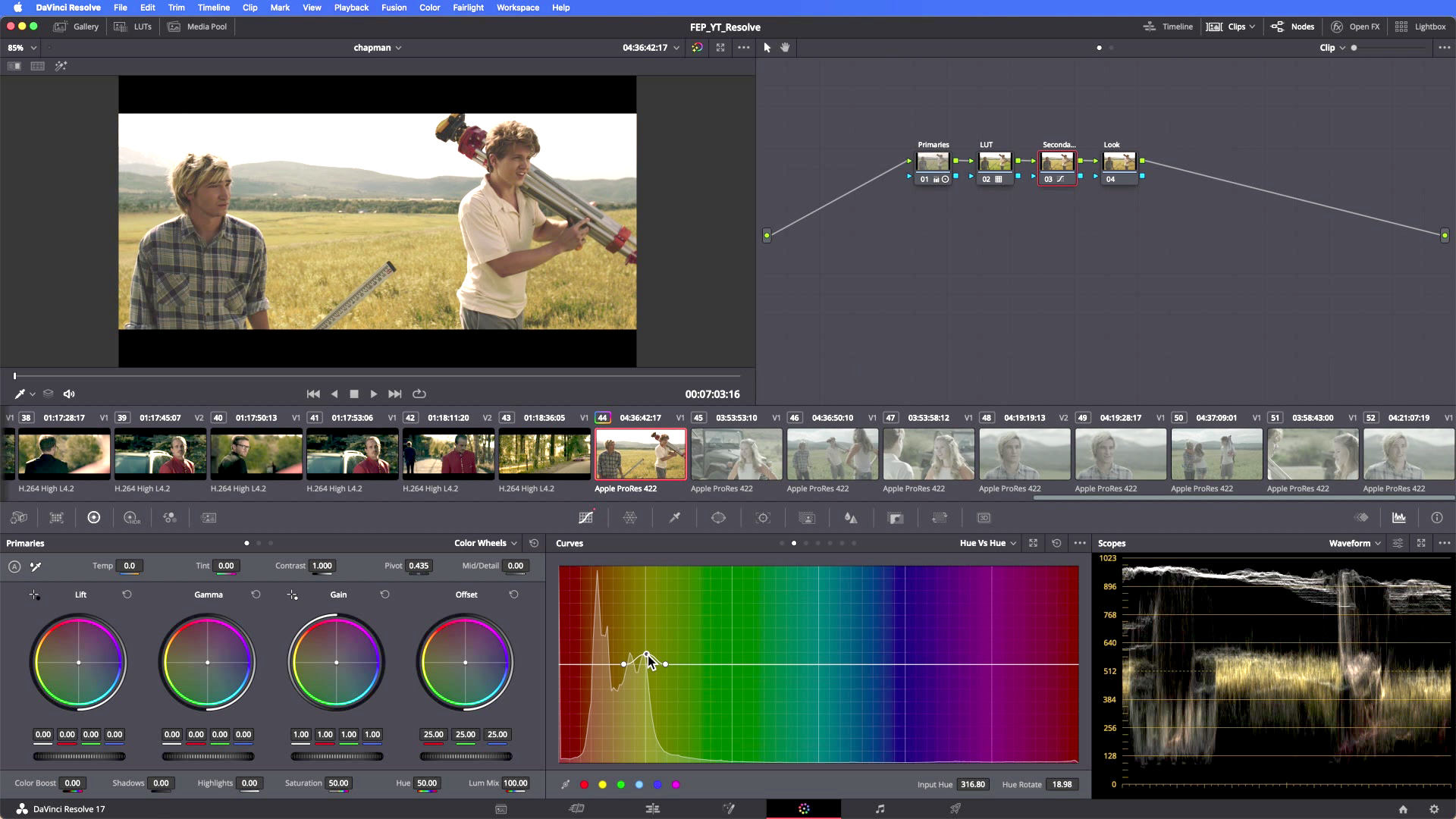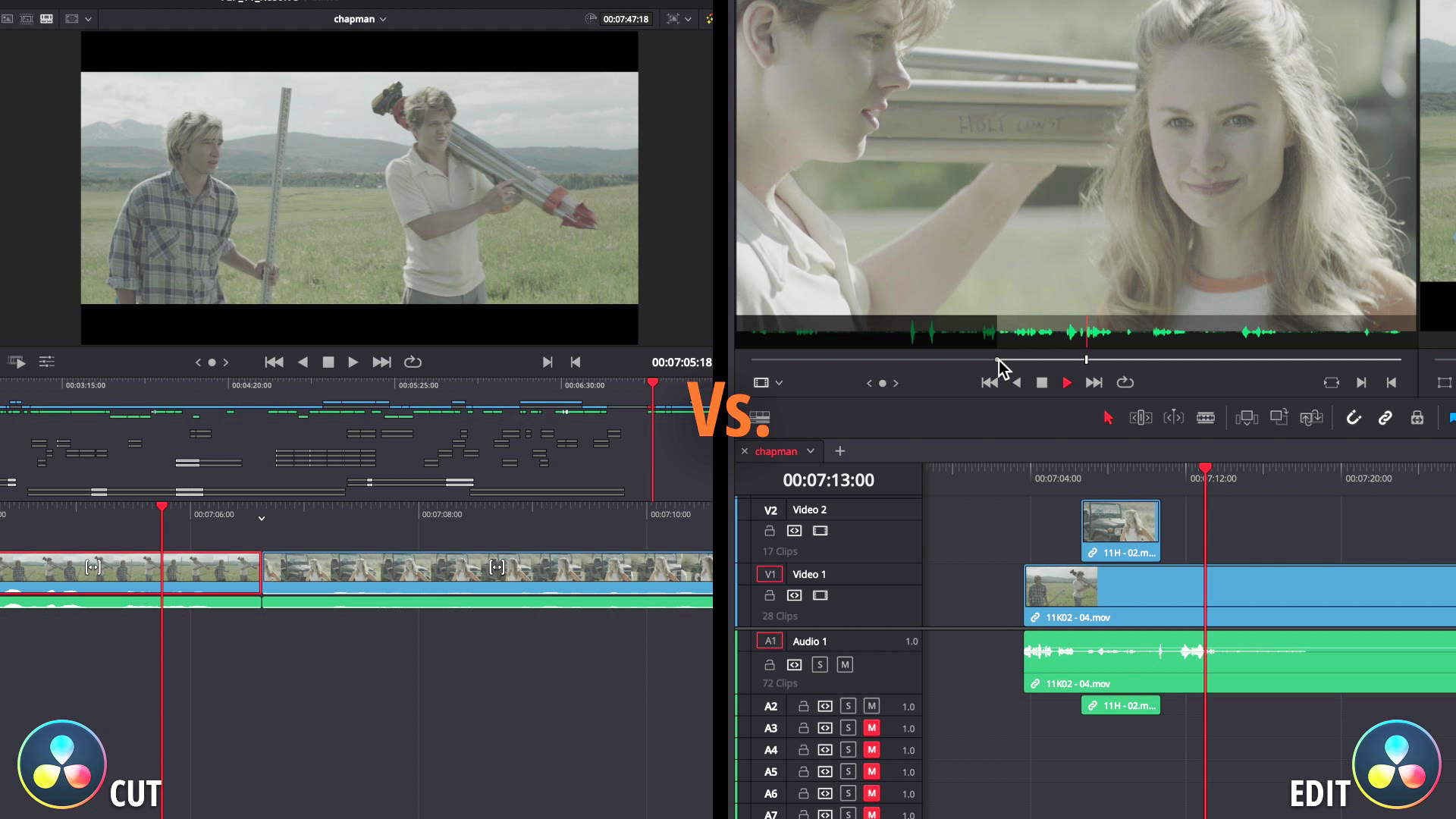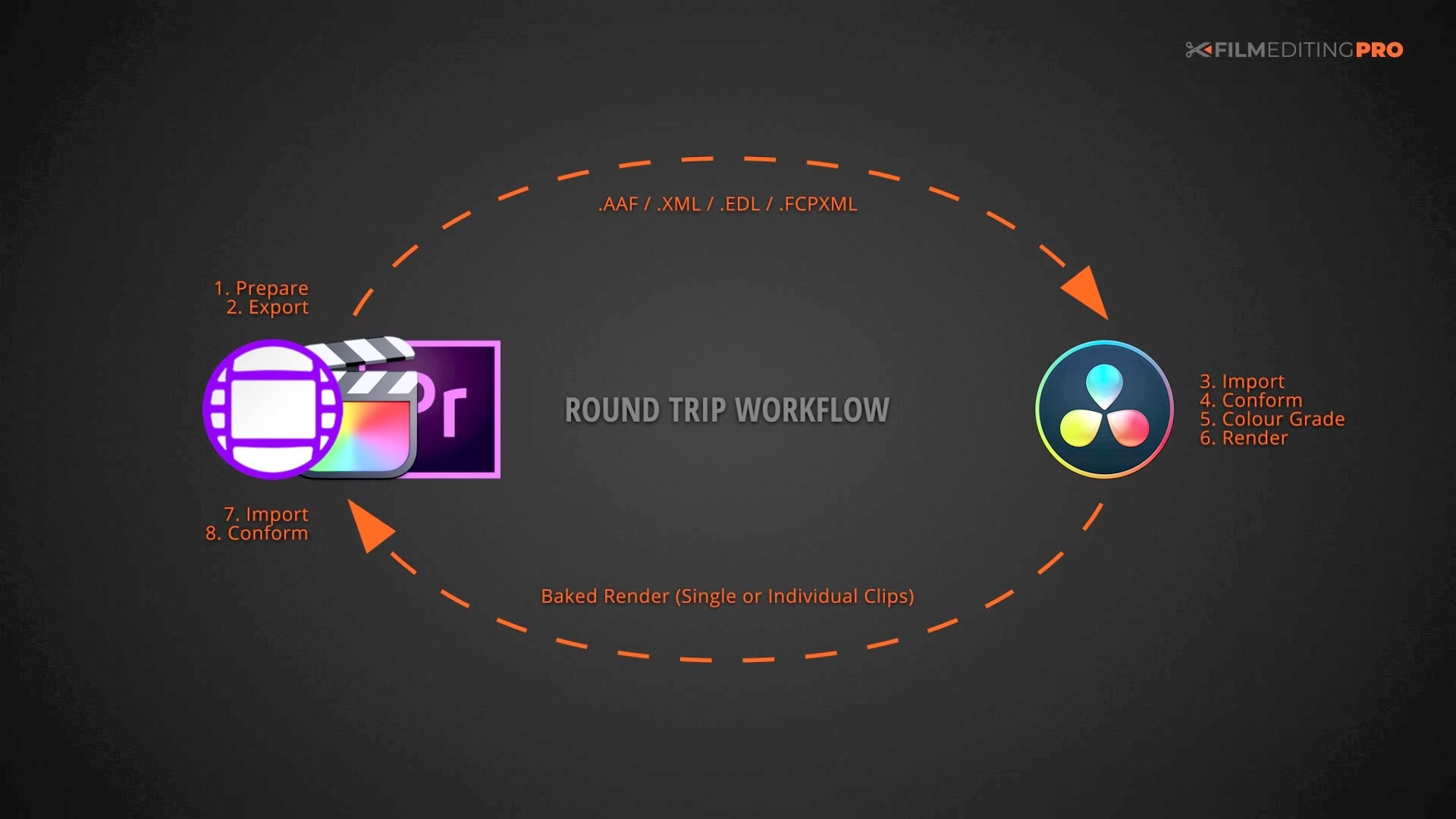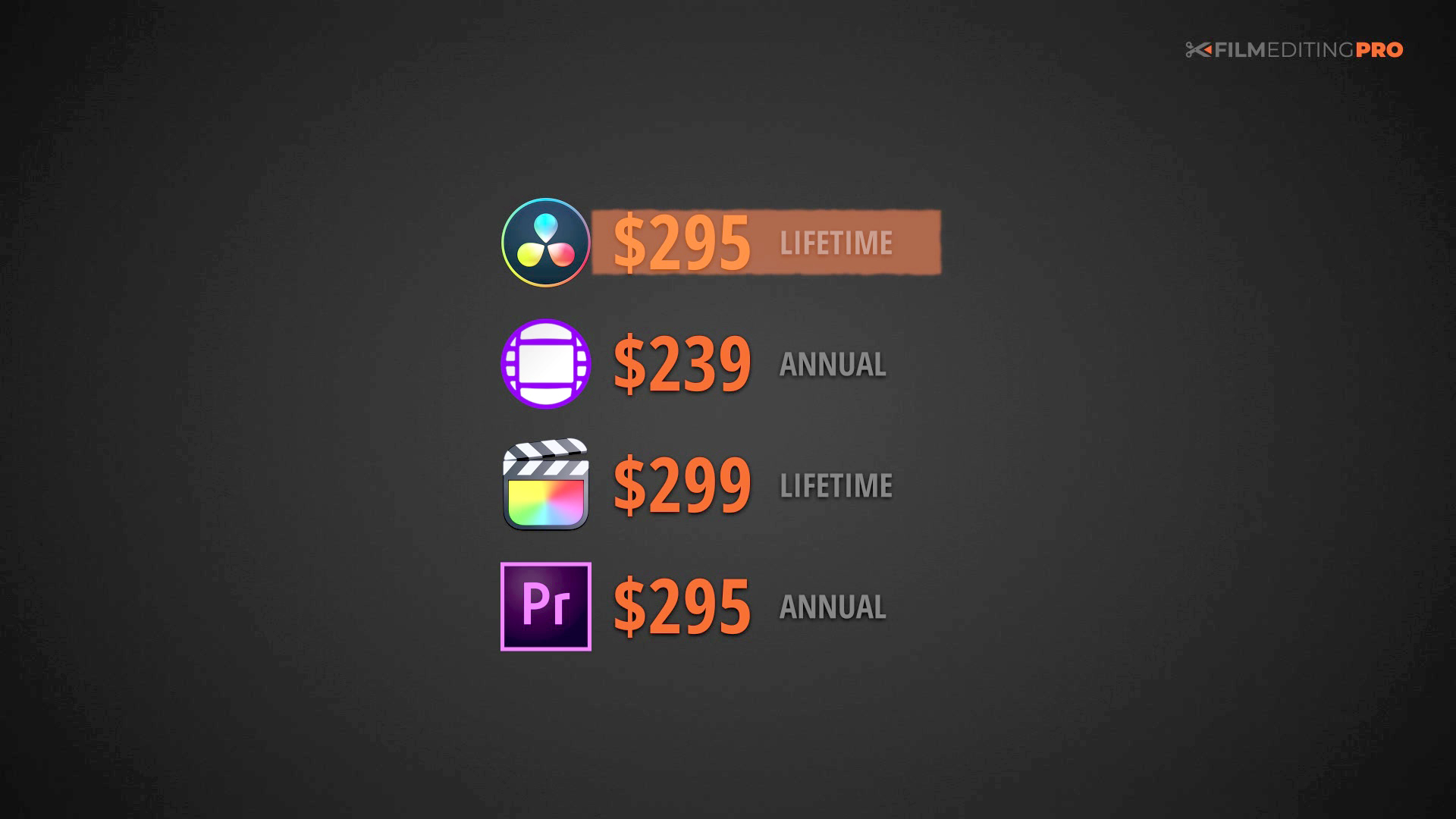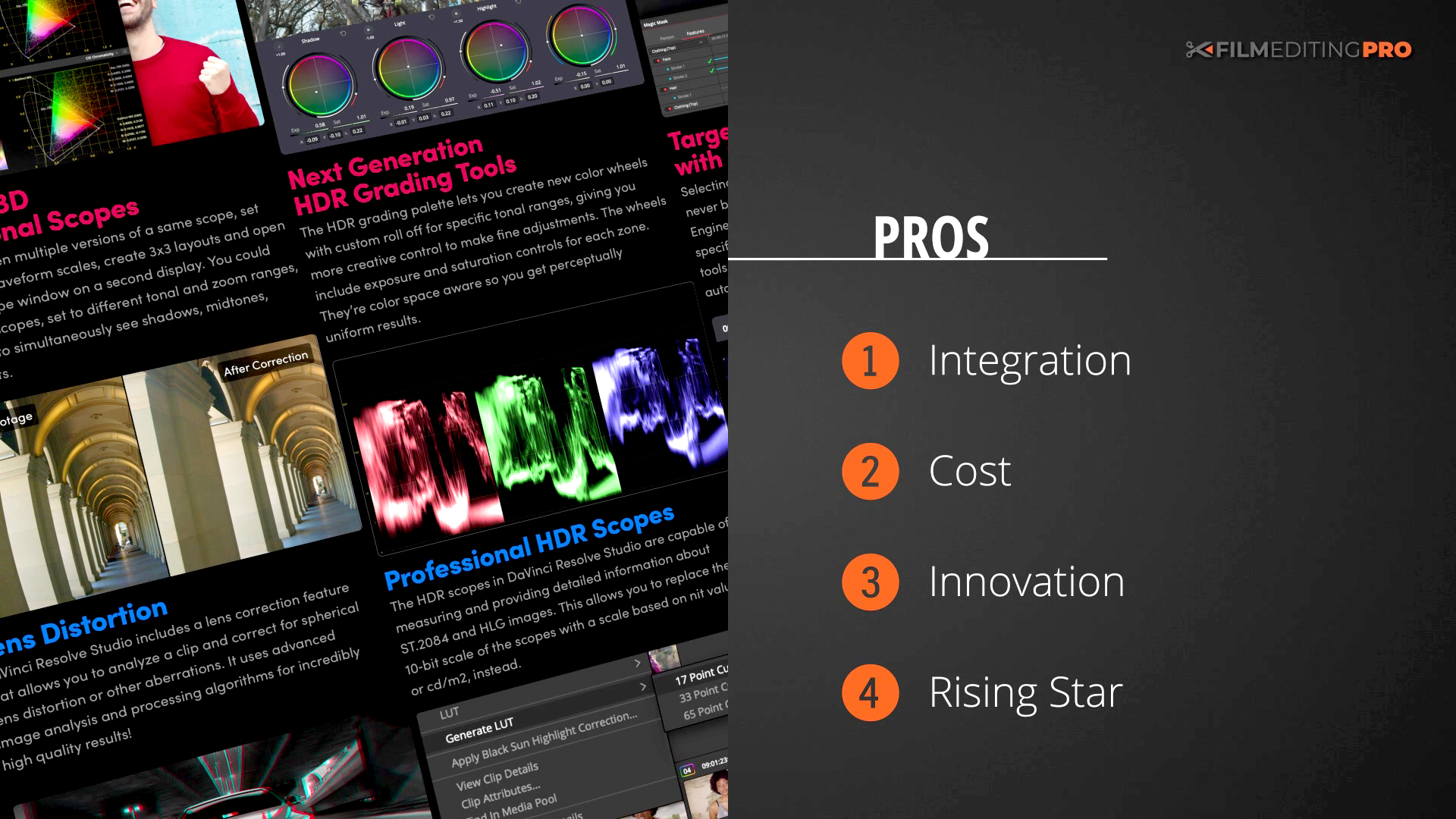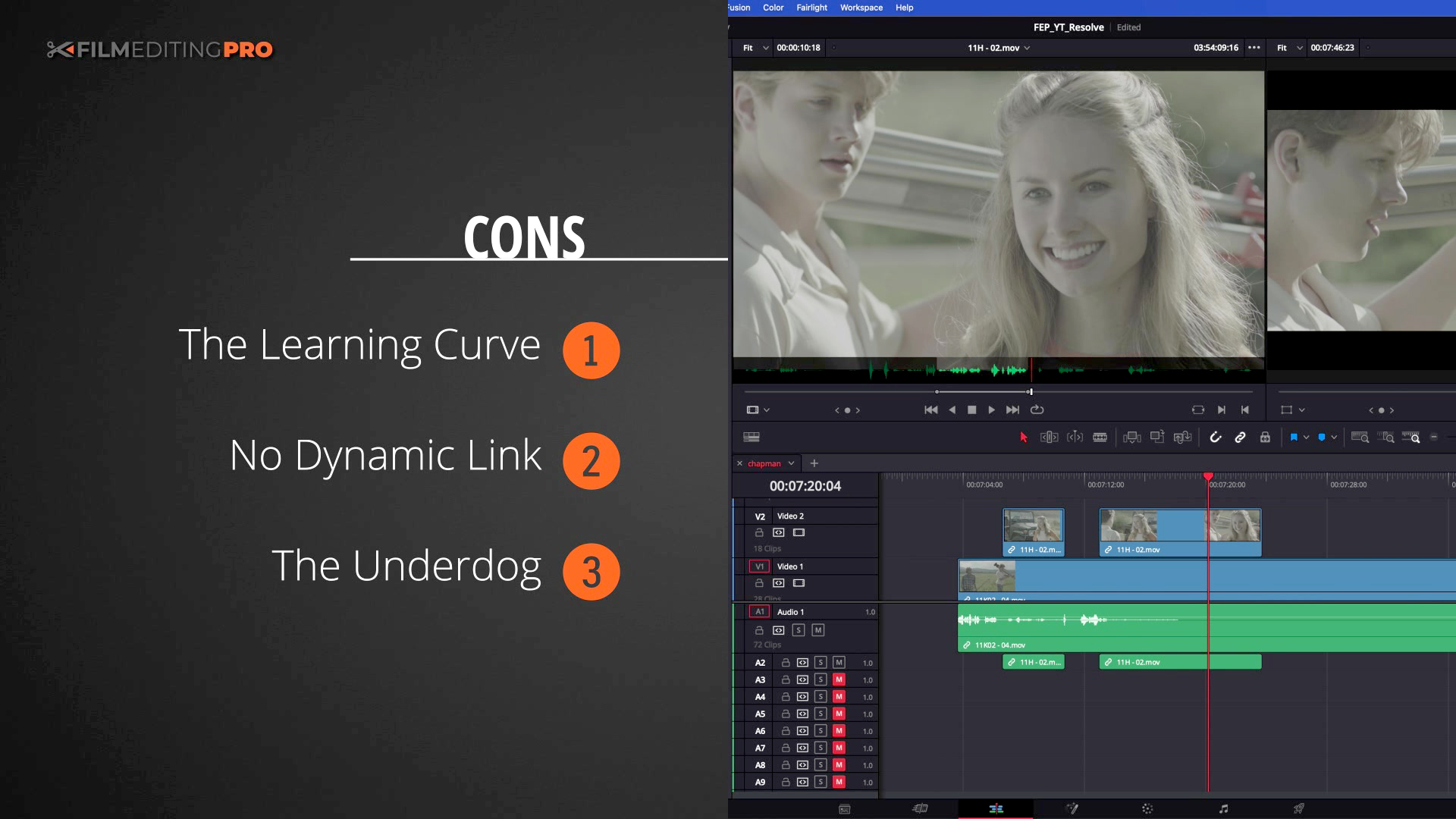So, you’ve found your first client, congratulations! After all that hard work and grind, someone…

Editing with DaVinci Resolve? Pros vs Cons
Once the underdog, DaVinci Resolve has grown into a mature NLE capable of competing with industry standards like Final Cut, Avid and Premiere Pro. So much so that many long-time editors are making the switch.
In this post we’re going to compare Resolve against the competition. Whether you’re considering learning Resolve, or are already an experienced user looking to better harness its unique strengths, check out the video or read the transcript below!
We’re going to start with a look at the Resolve user-interface, its feature-set, how it integrates with the rest of your post-production workflow and its cost — spoiler, it’s free!
Then, we’ll summarize Resolve’s strengths and weaknesses. And finally, we’ll answer the big question…should you start using it?
The Interface, Features, Integration & Cost
1. The Interface
Unlike other NLEs that require you to choose where to store your project files, Resolve manages these internally. While it is possible to export Resolve projects in the .drp format, by default Resolve stores project files in a database allowing you to access them via it’s own interface. Its refreshingly simple, a small detail we like that allows you to focus on creativity.
The interface is clean and well organized. Resolve’s feature set is divided into 7 pages, and each page is dedicated to a different part of the post production workflow. Media management, editing, VFX, color correction, plus grading, audio and delivery.
It’s similar to most NLE’s workspaces, each configured for a different task. Software like Premiere does offer more customization, but Resolve’s interface feels more polished. If you don’t feel the need to customize the UI, you won’t miss the ability to.
2. The Features
Resolve used to be a one trick pony, focusing on color grading but its feature set has grown to include editing, compositing, audio, 3D and encoding. If you’re used to Adobe’s Creative Suite you can think of this as Premiere, After Effects, Audition, Media Encoder and Lumetri all packed into one program. Although comparing Resolve’s color grading functionality to Lumetri is a bit of an understatement!
Resolve is the industry standard for color grading, used on films costing 100’s of millions of dollars. Essentially, Resolve blows Lumetri out of the water! But that’s a topic for another video.
When it comes to editing, Resolve has a bit of a split-personality, offering two different editing experiences via the cut and edit page. Not a perfect analogy, but you can think of the edit page as Premiere Pro or Avid – offering your traditional track-based editing experience, and the cut page is more like Final Cut Pro featuring a magnetic style timeline.
If the cut page scares you, don’t worry! Don’t use it. But if you are curious, it’s designed for speed, with a streamlined set of tools for the tasks you most commonly perform when assembling an edit. It’s actually kind of refreshing to see such innovation. And you don’t have to choose one or the other. Any edit can be opened in either the cut or edit page allowing you to switch between them depending on what stage your edit is at.
Editing in Resolve’s Edit page will feel familiar. In fact it’s so similar to editing in Premiere and Avid that it’s simpler to talk about where it’s different. All the same core tools and concepts are present. Sure, resolve has its quirks but what NLE doesn’t? Pick your poison.
It lacks some niche features found in other NLE’s like automatic resizing of videos for different aspect ratios or, final cuts fantastic keywording tools but it adds others like:
- Compatibility with audio timecode, generated by popular timecode hardware like Tentacle Sync.
- Automatic face detection for sorting media…a super cool feature.
- Automatic Cut Detection when importing pre-edited videos, which is similar to Premiere’s new Scene Edit Detection.
3. The Integration
An NLE’s editing experience is only part of the equation. It needs to be able to integrate with the rest of the post-production workflow.
Resolve is capable of importing and exporting XMLs, FCPSMLs, EDLs and AAFs making it easy to transfer edits to Avid, Final Cut Pro and Premiere. It’s got the best native compatibility of any NLE, which is plus if you are considering switching, knowing that there’s a way to export your edit to another edit NLE. Resolve is not a dead-end for your project.
Being able to seamlessly transition your edits into the color page is probably Resolve’s biggest draw. Color grading is no longer a luxury but an essential part of every edit. Many editors working in Premiere, Avid and Final Cut Pro are already using Resolve to color grade. Now that its creative editing capabilities are on par with its competitors, many are beginning to consider whether it’s easier to simply edit a project in Resolve from the very beginning to avoid the round trip in and out just for color grading.
And, now that Fusion and Fairlight are a part of Resolve you can also handle audio mixing, motion graphics and compositing without leaving the software.
4. The Cost
Finally, there’s Resolve’s most killer feature. Its cost.
It comes in two flavors. Free and Cheap. You might be thinking $300 dollars doesn’t sound cheap. Before we get into that, let’s talk about the free version. It retains all the core functionality of the paid version, but loses some color grading based features like noise-reduction, the neural engine, audio effects and some high-end broadcast features. If you’re worried, don’t be. Resolve’s free color grading is already better than anything that Premiere, Final Cut or Avid offers built-in.
The paid studio version is well worth its modest price tag. Adding similar functionality to Premiere, Final Cut or Avid through third party plugins would cost you way more, and you’d still be paying the original cost of the program on top. Resolve costs around the same as a year’s subscription to Premiere or Avid, but it’s yours forever, including free future upgrades.
It’s even possible to get Resolve Studio, the $300 version, for free when purchasing a Blackmagic Camera or other selected accessories.
The Pro’s and Con’s of Creative Editing in Resolve
Ok, so now let’s summarize some of the pros and cons of doing your creative editing directly in Resolve.
The Pro’s
1. Integration. Without a doubt, Resolve’s biggest strength is the integration of its industry leading color correction tools. Edits made in Premiere, Final Cut Pro and Avid are regularly imported into Resolve for grading. If you’ve ever experienced the pain of conforming an edit, you’ll have asked yourself, why don’t I simply make the edit in Resolve in the first place!?
2. Cost. It’s cheap at worst, free at best.
3. Innovation. Blackmagic have innovated by re-thinking editing with the cut page, but they’ve not forced you to change. It’s there as an option if you want it.
4. It’s a Rising Star! Its growing in popularity, is very mature, has a wide userbase and receives regular updates. Blackmagic makes a wide range of accessories for use with Resolve, including its keyboard, color grading consoles, video capture and output, and more. It’s a complete ecosystem you can buy into.
The Con’s
1. The Learning Curve. Those familiar with something like Adobe’s layer based approach to compositing will find Resolve’s node based workflow a bit confusing. It’s not hard to learn, but plan to spend a little time uncovering its power and rewiring your brain a little.
2. No Dynamic Linking. Another Adobe comparison. While Resolve does have Fusion and Fairlight, Premiere’s integration with After Effects, Photoshop, Illustrator, Audition and other Adobe packages via Dynamic Linking is undeniably powerful. If those links between software are currently a part of your workflow, you’ll have an empty hole in your heart where they once lived.
3. It’s the Underdog. Resolve is the industry leader for color grading, but it IS the underdog in the world of editing. That means there’s less demand for Resolve editors commercially, there are less plugins available, etc. Of course though, this IS changing.
Should You Switch to DaVinci Resolve for Creative Editing?
Switching from editing in Premiere or Avid to Resolve is pretty easy given that they all share the same track-based approach. You’ve got all the same tools, they might have different names, use different hotkeys or be in a different part of the interface…but there’s no quantum leap.
You don’t have to wire your brain a different way like you would if moving over to Final Cut Pro’s magnetic timeline. In fact, to facilitate the transition, you can customize Resolve to use Premiere Pro, Avid or Final Cut hotkeys instead of its own default key assignments.
The story’s a little different when it comes to color and Fusion. As mentioned, the biggest learning curve will be learning to use Resolve’s node-based color grading and compositing tools. While Lumetri wraps up the complexities of color grading in easy to use sliders and guides you through the process with its deliberately sequenced interface, Resolve gives you the keys to the workshop to let you play without supervision. Lumetri is quick to learn, but ultimately limited. Resolve is slower to learn, but way more powerful. Expect to spend time learning how to use the color panel before you’ll be able to work quickly.
The same goes for Fusion. It’s node based approach is nothing like Adobe After Effects layer based compositing!
So should you switch? That’s not for us to decide! Every NLE has strengths and weaknesses. Resolve is no different.
But should you try it? Absolutely. And because it’s free and allows you to easily export edits back to other NLEs, you have nothing to lose. And, knowing more than one NLE only makes you a more versatile and VALUABLE editor. While Avid, Final Cut Pro, Premiere and Resolve offer different experiences, they’ll all equally powerful editing packages.
Wrap Up
In the end, what separates Resolve? In our opinion, here are it’s three most compelling features:
1. You cannot argue with free.
2. It’s innovative ‘Cut’ interface. You might hate it, but you might love it.
3. It’s fully-integrated, industry-leading color grading tools.
At the end of the day, editing is fundamentally a creative skill, if you can edit a compelling story in one package you can edit it in another!
Leave Your Thoughts & Comments Below:

